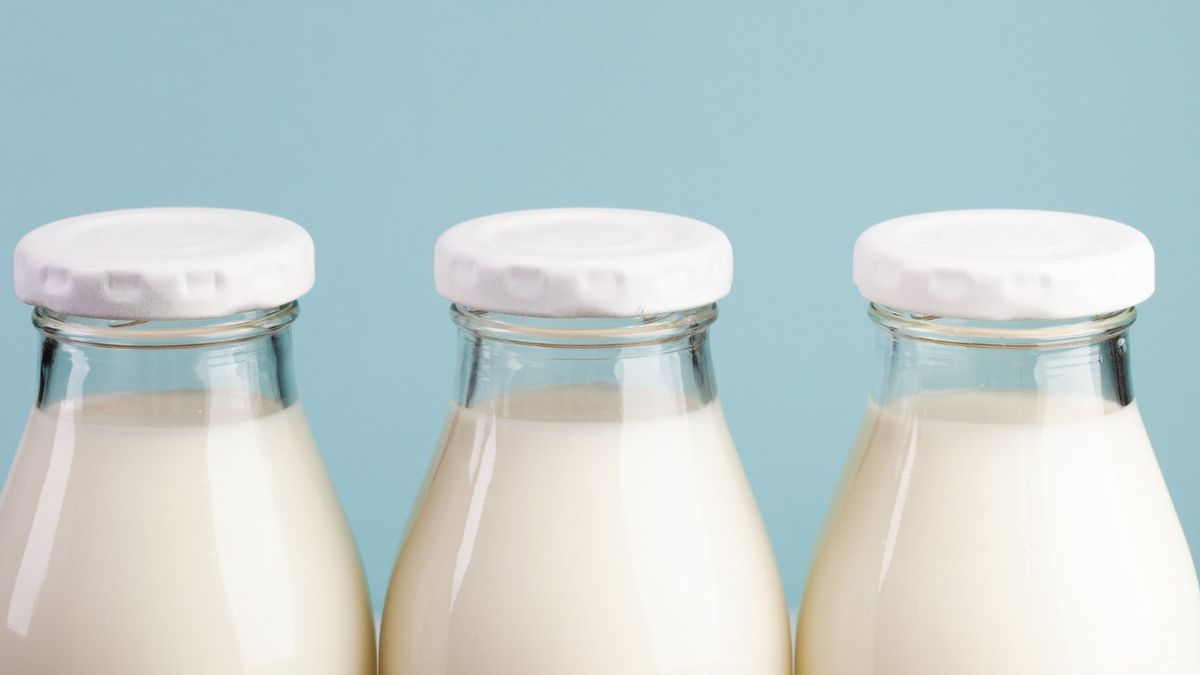YOGYAKARTA - Packaged milk sold on the market has different labels. There are sterile, pasteurized, and UHT milk. There are still many people who do not know the difference between sterile and pasteurized milk.
Although both dairy products, sterile milk and pasteurization are different from the way they are produced. The difference lies in the technique used to heat food products in a controlled manner that functions to kill dangerous pathogens.
The heating process makes the product more durable and safer for consumption. So what are the differences between sterile and pasteurized milk?
Both sterile milk and pasteurization have their own strengths and disadvantages. In order to choose milk according to your needs, you need to know the difference between sterile milk and pasteurization below.
The manufacture of sterile milk is carried out by heating it at high temperatures, namely 110 to 120 degrees Celsius. The duration of the warm-up time is also quite long because it takes 20 to 40 minutes.
The long warming process can kill all types of bacteria in milk. In addition, sterile milk can also last longer even in room temperature. Even if you keep it for 6 months, this milk will not be damaged and flavored.
Because the heating is done in high temperatures and takes longer time, the nutrients in milk are damaged or lost. The content of nutrients that are lost due to this process, including vitamin B and folic acid. In addition, most of the proteins in this milk will clot and affect the absorption by the body.
Pasteurization is a warm-up technique that can be applied to various products, such as milk and fruit juice. The heating process is carried out in a lower temperature, namely 75-85 degrees Celsius. The duration of the warm-up time is also quite short because it is only done for 10-15 seconds.
Because of the only slight heating process, in pasteurized milk, it is possible that you still have some microorganisms that are harmless when consumed by humans. Pasteurization milk resistance is also shorter. To store it for a few days, you need to put it in the refrigerator with a temperature of 2 to 6 degrees Celsius.
Pasteurized milk has an advantage in the form of a high nutritional natural content. This nutritional content of milk is better maintained because the heating process is not high in temperature and only for a short time. The natural nutritional content found in food ingredients will be easier for the body to absorb. Different when you eat foods that contain artificial nutrients.
In addition to sterile milk and pasteurization, there is also the type of ultra high temperature (UHT) milk. UHT milk is made with a heating process in high temperatures but in a short time. The temperature in UHT heating is 135 to 150 degrees Celsius.
The brief heating process aims to reduce or minimize the nutritional damage contained in milk. However, the process is able to kill more microorganisms than pasteurization techniques.
SEE ALSO:
However, UHT milk still has a deficiency, namely in the content of its natural nutrition which is reduced due to being heated at high temperatures. The heating process in high temperatures can solve the nutrients and proteins contained in milk. Therefore, usually UHT dairy products will be added with vitamins or fortification to continue to provide nutritional needs.
This type of milk is the most commonly sold dairy product in the market. UHT's milk resistance is also higher than pasteurization because it can last up to 1 to 6 months in room temperature.
Such is the review of differences in sterile and pasteurized milk, as well as UHT milk. These three types of milk have differences in terms of warm-up techniques, namely high temperature and duration of warm-up time. The three are both in good health and have their own strengths and disadvantages.
Stay up to date with the latest domestic and other overseas news on VOI. You present the latest and most updated nationally and internationally.
The English, Chinese, Japanese, Arabic, and French versions are automatically generated by the AI. So there may still be inaccuracies in translating, please always see Indonesian as our main language. (system supported by DigitalSiber.id)


















